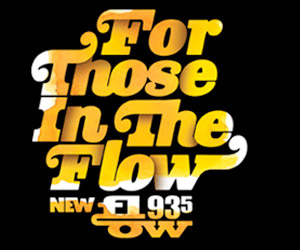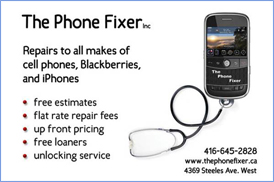ARTICLES:
Bell Novatel Wireless U547 Turbo Stick: Fast, and Sometimes Furious
There isn’t much to say about things that connect you to the Internet. They are conduits, merely avenues to data, and not the data itself. We live in a world of invisible backhaul switches, routers and subnets, and the only time we are aware of them is when they are not working. Similarly, in your home it is the WiFi Access Point or the Ethernet cable that brings the ‘net to your computer, and as long as everything, from the ISP to the WiFi card, is working correctly, it’s hard to take notice.
But it’s time we began to appreciate the nuanced ways in which we are constantly connected. WiFi does not travel, and we all know how inconvenient it is to have to wire an entire house for CAT5 cable. With the proliferation of 3G cellular networks, especially in big cities, we are now able to travel with our internet. Commercials opine on the possibilities of sitting in a park on a sunny day with your laptop, typing away to your friends unencumbered by cords or the short range of WiFi. According to the cellular carriers, we are free.
But we aren’t free. Not entirely, anyway. You see, one doesn’t realize how much, ahem, data, tends to be used when we surf the ‘net. With Flash and HTML5 the web is a veritable feast of information, and while most of that info itself is free, we are willing to pay handsomely to access that information. The more remote the location, the more expensive that access is. This makes sense, but the newest crop of carrier-sold accessories are a step in the right direction; free-to-cheap with a data plan, they are portable USB sticks that plug into any computer and give high-speed access to the same Internet we get at home.
The Bell Novatel Wireless U547 is just such a stick. It’s a plug-and-play device that works out of the box with any Windows or Mac system, and it claims to support HSPA+ speeds of up to 42Mbps. This is faster than my internet connection at home. It’s also probably faster than yours, too. This is Bell’s new overlay which was recently switched on in downtown Toronto. It essentially doubles their previous maximum speeds of 21Mbps, which is the de facto standard among 3G carriers in Canada. Bell’s 3G network, however, is more substantial, and their 21Mbps speeds are available in a greater portion of our great country than Rogers’.
Take a look at their coverage map for proof.
Installation
The USB stick comes out of the box ready to work on both Windows and Mac OS X. The software is built into a small partition on the USB drive, and the Mobile Connect software loads into your taskbar, waiting for your input. Light and unobtrusive, the app shows you how much data you’ve used on the up- and down-link, as well as what your current signal level is. You can also send a text message from the number installed on the SIM card (as it uses a SIM card the way your phone does, it just doesn’t have voice capabilities. This also means that you could take your SIM from any Bell data-enabled phone and use it in the Novatel to achieve 42Mbps speeds in available areas).
Performance
Simply, this thing is fast. I didn’t quite achieve the 42Mbps quoted speeds, but I’m just on the edge of the area where Bell claims to support the speeds, and I’m in a basement (cheap living for starving bloggers), and I was still able to achieve the above speeds. I will update the post when I am able to test from the heart of downtown.
There was also a notice inside the box claiming that sometime in the coming months Bell will be releasing a firmware update to improve the speed and reliability of the device. This should also coincide with the widening of the 42Mbps HSPA+ network.
Over an average of three tests, I averaged +-16Mpbs download/1.5Mbps upload.
This is astronomically fast, faster even than my home cable internet connection. The only major caveat is that at the moment bandwidth on a device like this is much more expensive than home cable or DSL — $30 will net you 500MB and $65 will net you 5GB. While this may seem like a lot of data allowance, in real world usage it’s less than it appears.
That is because when you use the ‘internet’ on a mobile device such as an iPhone or Android, most websites are compressed or modified for mobile viewing with fewer or lower-resolution pictures. When using a Turbo Stick on your laptop or home PC, it’s much easier to forget that you’re not plugged into a cable or DSL connection, and one movie download or a couple podcasts later you’ve used up 50% of your monthly allotment.
Luckily the software has a bandwidth counter handy, but this is something to keep in mind.
Conclusion
42Mbps is really, really something. That Bell can achieve this over the air, on a 3G network, is even more amazing. As more people transition from home- to mobile-based lives, internet sticks are going to be increasingly common. I can’t recommend this particular unit highly enough.
The Bell Novatel Wireless U547 Turbo Stick is available for $49.95 on a 3-year term, or $199.95 without a contract.
Plans start at $30/500MB and go up to $65/5GB.
Pros:
-really, really fast
-light software won’t bog down your computer
-easily accessible usage statistics
Cons:
-gets quite hot after use
-not as portable as a USB stick
-may make your second USB port inaccessible if they’re close together
-bandwidth eater
Thanks to Bell for the opportunity to test this unit.
Fun tip: the Speedtest.net uses up approximately 19MB up and down.
-
Dan
-
http://www.thecellularguru.com GuruDaniel








